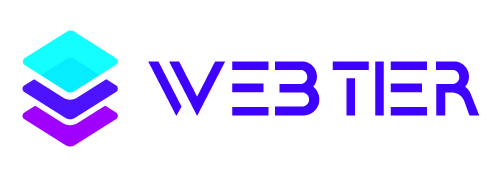Table of Contents
What is orchestration?
Orchestration refers to the coordinated execution of multiple IT automation tasks or processes. Orchestration typically involves multiple IT systems, applications, and services to ensure that deployment, configuration management, and other processes are performed in the correct order.
Automation and orchestration are two different yet related concepts. With automation refers to theuse of software to carry out determined activities without human intervention to reduce errors and time spent manually managing the operations necessary to deploy, administer and scale IT infrastructure and applications.
With orchestration instead it means the coordination of multiple automated tasks into workflows advanced so that individual activities work together to perform specific functions or processes.
The importance of orchestration
Today's IT teams often manage a wide range of servers, systems and applications distributed across private data centers, cloud environments and edge locations. In increasingly complex IT environments theTask automation helps improve efficiency and simplify process management, but leveraging automation in scalable ways can be complex.
IT process automation involves the automation of all the individual activities (or tasks) that make up a process. But not only. For a process to be said completely automated, it is also necessary that all the activities that form it operate in synergy to ensure that at the end of an activity the next correct one automatically starts. Some automation solutions can do this by linking tasks into logical workflows, thus eliminating the need for manual intervention to initiate individual actions at the right time. Creating these types of workflows is one of the tasks of orchestration.
Even individual parts of a task can comprise multi-step workflows that depend on communication with third-party systems. For example, provisioning a system typically requires some degree of orchestration with hypervisors to create virtual machines, communicating with the network to ensure proper connectivity is configured, and confirming that all necessary firewall policies are applied. And this is the context in which one is inserted orchestration solution complete. These tools are capable of coordinating activities distributed across multiple systems and allow teams to develop fully automated workflows with which to cover entire business use scenarios.
What does orchestration consist of?
In general with the term orchestration the IT workflows for specific use scenarios and the tools to manage them are indicated. Docker is an open source platform for container deployment, which has orchestration tools (Docker Swarm) which allows you to automate the deployment and scalability of containerized applications.
Orchestration occurs when you place different systems and tools into logical workflows so that tasks can interact with external systems and result in a fully automated process, from start to finish. Let's look at orchestration workflows for some of the most popular IT usage scenarios.
A typical workflow for the deployment of a server includes the following steps:
- Deploy the server.
- Configure the server.
- Assign storage capacity.
- Select an application from a repository, install and configure it.
- Communicate with your firewall or load balancer to ensure it allows the new system access to its pool and policies.
- Update your company's ITSM system to confirm that the server deployment was successful.
Since this process involves communication with several third-party systems, we are dealing with an orchestration workflow and not one large automation task. The IT team just needs to start the workflow and at the end of the process they will get a configured server, provisioned with standard applications and integrated with all the necessary tools.
A typical workflow for the provisioning a cloud instance includes the following steps:
- Provision the instance.
- Configure the operating system.
- Submit a ticket to the ITSM system to notify the system activation.
- Update the firewall.
- Create the necessary user accounts with the appropriate permissions.
- Connect the system to an external database.
Orchestration workflows can also be leveraged for response to security threats and incidents, for example when the presence of malware is detected on a server. The system to be protected, i.e. the server, is not able to communicate with security systems and tools to promptly manage threats. Instead, a good orchestration solution can:
- Communicate with switches and firewalls to discover the source of the traffic.
- Configure IP filters and packet analysis tools to better examine the traffic or potential attack.
- Configure these systems to transmit packets of information to third-party monitoring tools to optimize security logs.
- Isolate the suspicious IP address.
- Enter this information into a ticket management system to notify the time of the attack, the IP address and the hardware address, as well as confirm that the potential threat has been isolated from the system.
Once these automated steps are complete, the security team can analyze the logs, determine whether it was an attack and take action, or let an event-based automation solution apply the most appropriate response.
In addition to the examples just described, orchestration allows you to coordinate multiple systems to automatically execute the steps of almost all IT processes, improving their consistency and efficiency.

The benefits of Docker orchestration
Once workflows are defined for orchestrating tasks across every system and tool needed, IT teams can choose and initiate the workflow for the desired end result, such as building a new server or updating an application, and this will automatically perform each step, in the correct order, always producing the same result.
Additionally, orchestration supports and enriches your DevOps strategy. For example, with a DevOps approach to the CI/CD pipeline, when a developer creates and modifies an application's container image, that modification triggers the creation of a new image and the upgrade of the clusters that use it in production. With an orchestration solution, IT teams can create a workflow whereby each code change automatically triggers testing in a User Acceptance Testing (UAT) environment and deploys the application. In this way, each update starts a sequence of automated tasks that end with the application being updated in production.
The main features of orchestration with Docker are:
- Operational efficiency: automates complex operations, improving efficiency and reducing the risk of human error.
- High availability: guarantees the continuous availability of applications even in the event of failures, thanks to redundancy and failover mechanisms.
- Flexibility: allows you to easily manage updates and rollbacks, ensuring that applications are always in an optimal state.
- Safety: isolates containers to reduce attack surfaces and automatically manages security updates.
Examples of use
Enterprises use Docker orchestration for various scenarios, such as managing microservices, deploying large-scale applications, and deploying development and test environments quickly and reliably.
Why choose WebTier for orchestration?
WebTier it's a proprietary orchestration platform of containers flexible and highly customizable. With a'redundant infrastructure, WebTier ensures the operational continuity And there maximum safety for company data.
Orchestration with Docker represents a powerful solution for companies that want to effectively and securely manage their containerized applications. Thanks to its advanced features, Docker simplifies container management, ensuring optimal performance and high availability in complex IT environments.

